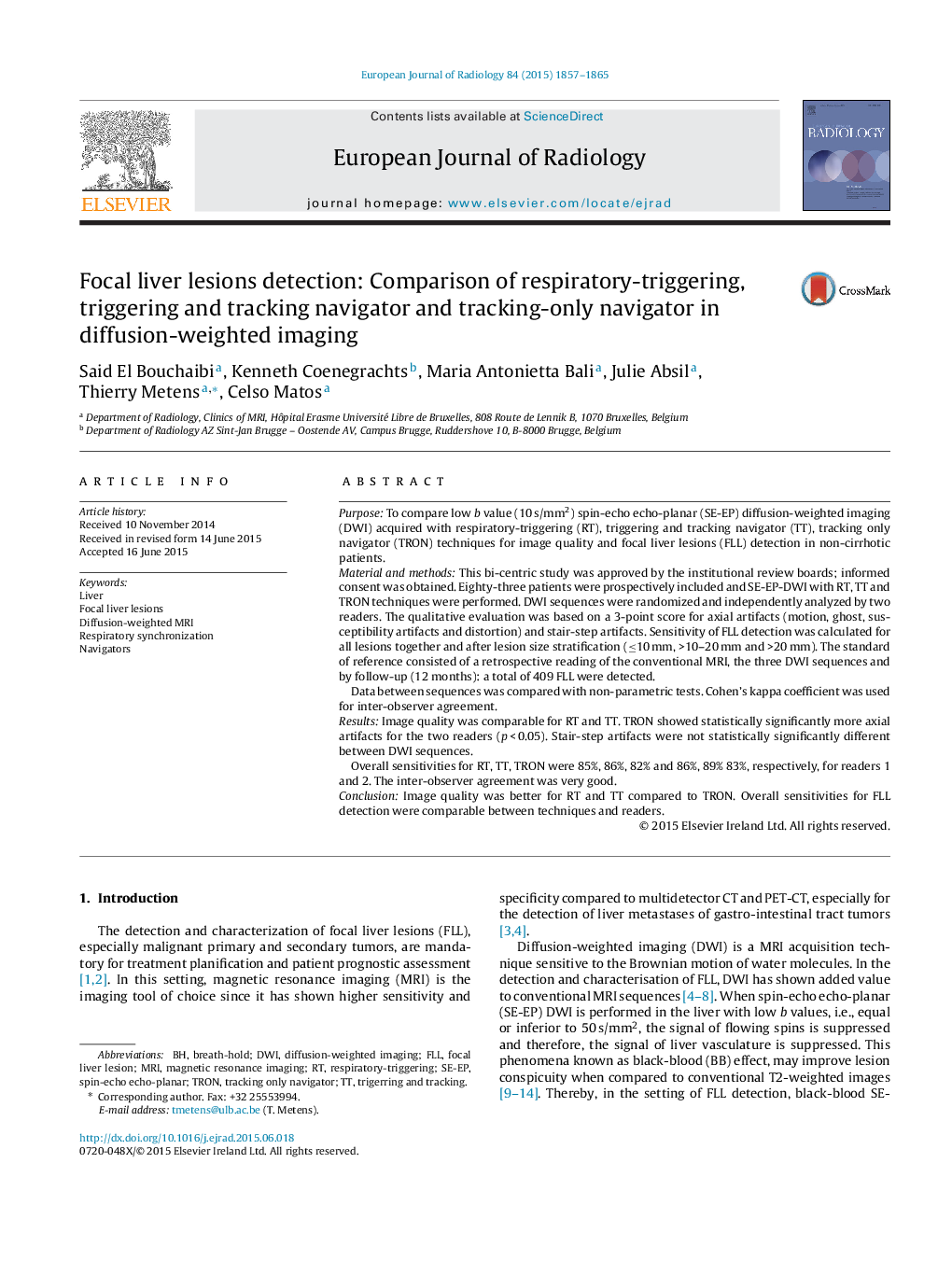| Article ID | Journal | Published Year | Pages | File Type |
|---|---|---|---|---|
| 4225163 | European Journal of Radiology | 2015 | 9 Pages |
•Tracking navigator had more artefacts than respiratory triggered or trigger & track navigator images.•Focal liver lesions detection was similar with respiratory trigger, trigger & track or tracking navigator.•Sensitivity to detect focal liver lesions reached 89% (363/409) with trigger & track images.•Inter-observer agreement in detecting focal liver lesions was very good k > 0.84 in b = 10 s/mm2 images.•For lesions <10 mm trigger & track detection was superior than tracking navigator (p = 0.03, reader 2).
PurposeTo compare low b value (10 s/mm2) spin-echo echo-planar (SE-EP) diffusion-weighted imaging (DWI) acquired with respiratory-triggering (RT), triggering and tracking navigator (TT), tracking only navigator (TRON) techniques for image quality and focal liver lesions (FLL) detection in non-cirrhotic patients.Material and methodsThis bi-centric study was approved by the institutional review boards; informed consent was obtained. Eighty-three patients were prospectively included and SE-EP-DWI with RT, TT and TRON techniques were performed. DWI sequences were randomized and independently analyzed by two readers. The qualitative evaluation was based on a 3-point score for axial artifacts (motion, ghost, susceptibility artifacts and distortion) and stair-step artifacts. Sensitivity of FLL detection was calculated for all lesions together and after lesion size stratification (≤10 mm, >10–20 mm and >20 mm). The standard of reference consisted of a retrospective reading of the conventional MRI, the three DWI sequences and by follow-up (12 months): a total of 409 FLL were detected.Data between sequences was compared with non-parametric tests. Cohen’s kappa coefficient was used for inter-observer agreement.ResultsImage quality was comparable for RT and TT. TRON showed statistically significantly more axial artifacts for the two readers (p < 0.05). Stair-step artifacts were not statistically significantly different between DWI sequences.Overall sensitivities for RT, TT, TRON were 85%, 86%, 82% and 86%, 89% 83%, respectively, for readers 1 and 2. The inter-observer agreement was very good.ConclusionImage quality was better for RT and TT compared to TRON. Overall sensitivities for FLL detection were comparable between techniques and readers.
